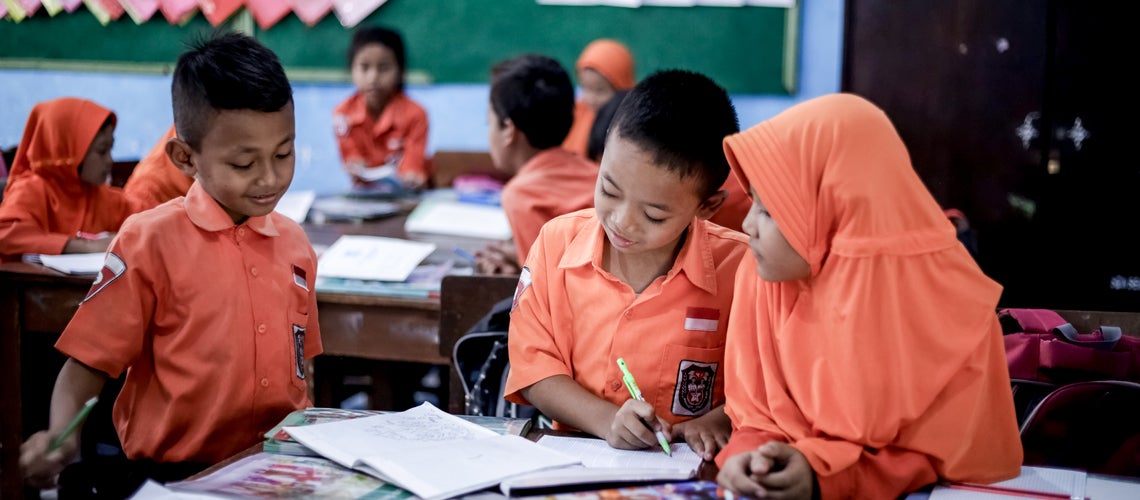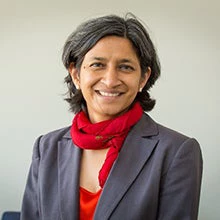 Students learning in school in Mojokerto, Indonesia. Credit: Akhmad Dody/World Bank
Students learning in school in Mojokerto, Indonesia. Credit: Akhmad Dody/World Bank
Our comprehensive review of available global data shows that the COVID-19 pandemic silently knocked millions of children and young people off course at critical times in their lives , causing severe setbacks in their human capital development that countries ignore at their peril.
The pandemic caused the biggest reversal in poverty reduction since monitoring began in 1990, and governments are now struggling tooth and nail to deal with overlapping food, fuel, climate and fiscal crises.
But the largely hidden human capital scars, born by our younger generation, must not be overlooked.
Taken together these setbacks not only jeopardize the lives of millions of young people but the growth, resilience and security that countries need for a prosperous and stable future. Unless countries act now, the COVID-19-induced human capital collapse will widen over time, further increasing inequality, poverty and – potentially - instability on a wide scale.
Collapse and Recovery: How COVID-19 Eroded Human Capital and What to Do about It, details how massive COVID’s blow to human capital accumulation really was for people under the age of 25—the generation which will make up 90 percent of the prime-age workforce in 2050. Though more advantaged populations and countries also suffered, young people in low-income countries and poorer households in these countries sustained the most damage.
Human capital—the health, skills and knowledge embodied in people—develops throughout life, but the earliest stages are the most critical. Human capital increases when parents make investments in their children and when quality healthcare, childcare, education, employment programs, and social assistance are available.
The pandemic stripped young people—especially those in low-income countries—of these essential building blocks.
Very young children lost access to public and private services and faced more stressful home environments, which robbed them of opportunities for building cognitive and social-emotional skills and accessing critical health services, including vaccines. Our analysis shows that preschool-age children in multiple low- and middle-income countries lost more than 34 percent of learning in early language and literacy and more than 29 percent of learning in math, compared to pre-pandemic cohorts. We calculate that these cognitive deficits could translate into a 25 percent decline in earnings at their prime working age.
"The pandemic caused the biggest reversal in poverty reduction since monitoring began in 1990, and governments are now struggling tooth and nail to deal with overlapping food, fuel, climate and fiscal crises."
School aged children took a huge hit with school closures and ineffective remote learning measures causing them to miss out on learning and to also forget what they had learned. We calculate that, on average, for every 30 days of school closure students lost about 32 days of learning. Considering that globally one billion children missed a full year of in-person schooling and 700 million missed 18 months or more these are staggering widespread losses.
Doing nothing would be a tragedy for the children, and for the societies they live in. Today’s students in low- and middle-income countries could lose as much as 10 percent of their total earnings over their lives due to the COVID-related education shocks.
The pandemic also hurt youth entering the labor market, another make-or-break moment which dictates future labor market productivity. Forty million young people who would have had a job in the absence of the pandemic, still did not have one at the end of 2021. Evidence from Brazil, Ethiopia, Mexico, Pakistan, South Africa and Vietnam shows that 25 percent of all young people were neither in education, employment nor training in 2021. In Pakistan alone there was an increase of 1.6 million idle youth in , a concerning data point when it comes to delayed or wholly lost potential.
At all stages in the life cycle, and in all countries where we have data, the blow to human capital was largest for those who were most disadvantaged. Thus, the pandemic risks increasing future inequalities—at a time when inequality has already been rising in many countries. A lot of damage has already been done but it’s not impossible to recover some of the losses.
The time to act is short.
So what can be done and how? In the report we outline options like expanded pre-school and parenting programs, vaccination and health campaigns and cash transfers for vulnerable households. We advise increased instructional time in schools, tracking at-risk youth and training and other workforce-oriented initiatives.
This list is long, and countries face overlapping crises that demand attention and resources. This is why in the report we also offer an approach for prioritizing. Understanding the cost, complexity and political commitment for interventions is necessary for addressing and recovering these losses now, before it’s too late.
If countries want to do right by their young people—if they want to protect their human capital and build resilience to face the next inevitable shock—they must act now. Time is running out and an inclusive and prosperous future depends on it.



Join the Conversation